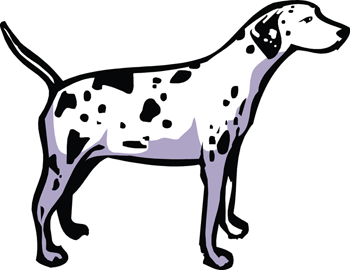Today I am going to try and explain why Dalmatians are spotty. I started off the task mentally walking 101 Disney dogs in a field and ended up sinking with them in a jungle of genetic quicksand!

The tricky part of the explanation rests on the idea many different genes interact with each other to determine the outward appearance of coat colour and type. Fortunately for you I have spent many hours investigating the genetic basis of coat type and distribution in dogs and the ground breaking work of Clarence Little and Ovjing Winge (not made up) in the 50s up to the latest developments in 21st century DNA mapping. I have concluded that it is even more complicated than I thought and I do not really understand it.
However, reading the information lots of times and using smaller and smaller words in my head I have the basics. Scientists have found at least eight positions on the dog genome that determine coat colour and pattern. Cleverly they started at the A position (A stands for Agouti) progressed to the black or brown hair part (B genes), coloured hair (C locus), diluted (D) part of the genome and reached extended (E) that determines where you have the coloured hair on your body. Usefully they followed an alphabetical route of names although they obviously shoe-horned Agouti in there at the beginning and the C locus probably does not exist in dogs (never seen an albino dog have you!). However to complicate and playing a game of genetic top trumps we now know that (E) actually trumps everything, spotted(S) and (T) ticked join in for spottiness and K (dominant blacK) contributes to very black.
So to conclude, Dalmatians are unique in the dog world and their spots are due to a set combination of the spotted/piebald, ticking and flecking genes at three loci. Spot colour is determined by a gene somewhere else possibly on chromosome 11. Any questions?
Ben Hynes is a veterinary surgeon at Abbey Vets

